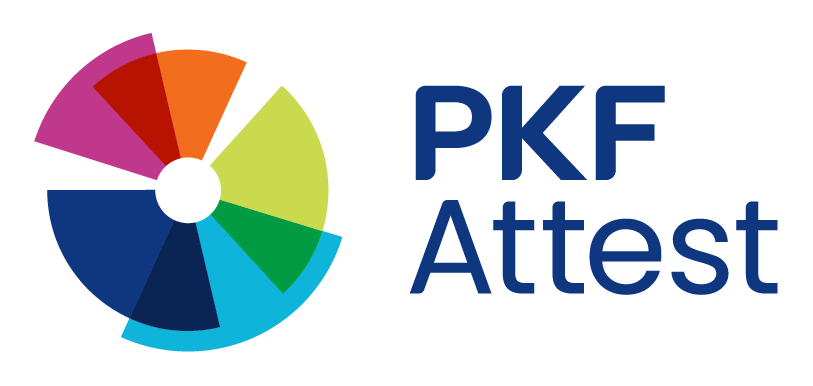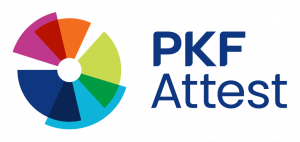Sergio Manzanedo, Digital Transformation Area Manager at PKF Attest, highlights the importance of a good design and deployment process, listing the necessary phases for a Business Intelligence tool to meet its objective: to help managers make business decisions easily and effectively.
We take as a reference one of the leading solutions in the market in Business Intelligence, Power BI, and if you wish we invite you to a free webinar where we will visually present everything described here.
Power BI is not a "cool" charting application
This is one of those mantras that one must fight against when one is professionally dedicated to a field and that many times generates a certain strabismus, or as they say in the field of optics, gives rise to aberrations of perception that generate a distorted image of reality.
While it is true that the first perceived value when you are introduced to a Business Intelligence tool like Power BI is its "ease" of building charts, it is also true that this is like selling a car by its body lines. One has to be aware that building visual objects is only one of the last parts of a whole process of designing and deploying a BI system.
Power BI is more than a visualization tool, since it is intended to support all the necessary stages for the design and deployment of all phases of a BI project. As Microsoft itself says, it is a complete Business Analytics solution.
And what are these phases to design a BI System? Basically they are:
- Definition of required data.
- Obtaining the necessary data.
- Data ETL operations (extraction, transformation and cleansing) (Power Query)(M).
- Dimensional model. Set of techniques and concepts to build a DataWharehouse.
- Data enrichment (DAX) and visualizations.
- Publish and share.
So Power BI is a DW?
All the technology behind Power BI is the same as SQL Server, in fact Microsoft itself wants Power BI to become a superset of Analysis Services. The Analysis Services engine is at the foundation of Power BI and powers its data sets. Power BI is a one-stop shop for both enterprise and self-service Bi on a single, all-inclusive platform.
In other words, Power BI is designed to respond to two major critical needs of organizations:
- Be a self-service BI platform. It not only serves to create "cool" visualizations but allows users to create their own dashboards, track metrics as they see fit, and basically own their own learning journey about the behavior of their organization's data.
- To be the development tool to support the entire technical side, from data extraction, through data transformation and cleansing, to dimensional modeling and finally security policies.
Perhaps to be better understood, the first need has to do with the end user who consumes data and visualizations, that is, a "Front" user. The second has to do with all the "Back" part that covers all the architecture, technical processes and dimensional modeling.
What does a BI Project basically consist of?
Broadly speaking, there are several conceptual phases that should not be overlooked if the chances of success of these projects are to be increased:
1º- Scope of the Project
Does it apply to all business areas? Are we going to start with a specific area? How do we decide where to start?
Recommendation: Choose an area with a high impact on the business, and from which we have a certain level of data (in quality, availability, accessibility, integrity, etc.). Except for organizations with a Data Governance System in place, or with organized data architecture, it is not recommended to approach a Business Intelligence project in an integral way.
2º- Strategic Definition of Scorecard
What are the strategic objectives of the organization, which are those that affect the business area being worked on? is there a clear inventory of the indicators and metrics to be measured? are there clear objectives that put these indicators and metrics into context?
Recommendation: Design a high-level scorecard and agree on the metrics and KPIs to be designed in advance with all the stakeholders involved in the project.
3º- Identify data sources
Identify the applications where the data originates, identify the basic levels of data quality, traceability and security. is data cleansing necessary? are the data quality levels adequate? are there security or privacy policies to be considered?
Recommendation: Perform a simple pre-check of the data quality levels and the basic privacy and security levels applicable.
4º- Define the BI System Architecture
DW, Theoretical Data Model, granularity, hierarchy, dimensions, relationships, etc. Are we clear if we are going to need a Data Warehouse? What technology are we going to use to create it? What is the necessary infrastructure?
Recommendation: Designing the architecture and Modeling is fundamental to make the Business Intelligence system sustainable and Modeling is critical to facilitate the subsequent exploitation of the data.
5º- Deploy the ETL operations and feed the DW
Define cleanup operations, validate data, perform the necessary transformation, schedule DW update frequencies, etc.
Recommendation: Be strict with data quality policies, and take advantage of data validation processes to reinforce transactional application procedures. Remember the message: garbage in, garbage out.
6º- Connect the data visualization tool (Power BI) to the DW.
Connect the data visualization tool to the DW, deploy Data Modeling, define metrics and KPIs, create dashboards and visualizations.
Recommendation: Follow the same structure in the logic of the panels and make them similar to the structure of the organizational scorecard. Try not to overuse tables and use graphical visualizations as much as possible.
7º- Publish and share
Display access permissions according to user roles. Once the models and panels are published and shared, self-consumption by authorized users is encouraged.
Recommendation: Deploy dynamic security according to dimensions. Continue to evolve dashboards according to user usage. Lighten designs whenever possible without affecting the user experience.
Final recommendation:
Although making cool graphs is a temptation, if you are really thinking of deploying a Business Intelligence System in your organization, we recommend you to go hand in hand with a partner with experience in each and every one of the above phases, so you will avoid more than one headache and surely it will be more profitable economically.
We invite you next July 9th at 10:00 am to an online session where you will learn in a visual way and on a specific tool, Power BI, the process and the result.


